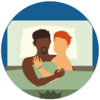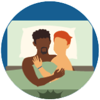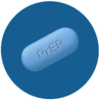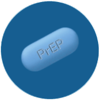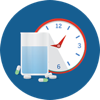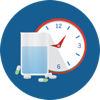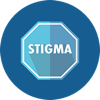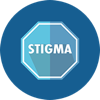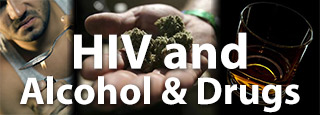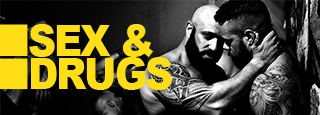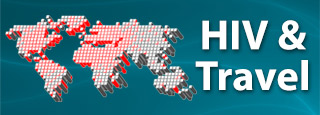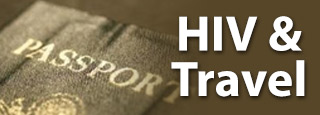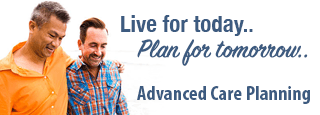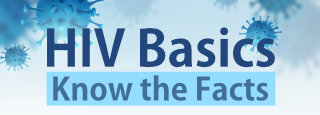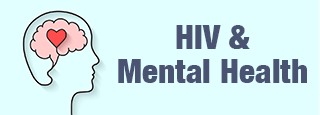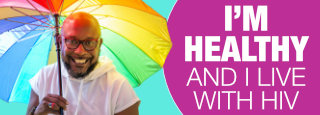HIV Transmission
Most people who get HIV get it through anal or vaginal sex. But there are powerful tools that can help prevent HIV transmission.
This section answers some of the most common questions about the risk of HIV transmission for different types of sex, injection drug use, and other activities.
This section answers some of the most common questions about the risk of HIV transmission for different types of sex, injection drug use, and other activities.
HIV Basics | About HIV | HIV Transmission | HIV Prevention | PrEP | PEP | HIV Stigma
How is HIV passed from one person to another?
Most people who get HIV get it through anal or vaginal sex, or sharing needles, syringes, or other drug injection equipment (for example, cookers). But there are powerful tools that can help prevent HIV transmission.
Can I get HIV from anal sex?
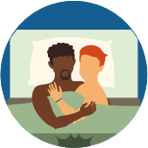
- Anal sex is the riskiest type of sex for getting or transmitting HIV.
- Being the receptive partner (bottom) is riskier for getting HIV than being the insertive partner (top).
- The bottom’s risk of getting HIV is very high because the rectum’s lining is thin and may allow HIV to enter the body during anal sex.
- The top is also at risk because HIV can enter the body through the opening at the tip of the penis (or urethra), the foreskin if the penis isn’t circumcised, or small cuts, scratches, or open sores anywhere on the penis.
Can I get HIV from vaginal sex?

- Vaginal sex is less risky for getting HIV than receptive anal sex.
- Either partner can get HIV during vaginal sex.
- Most women who get HIV get it from vaginal sex. HIV can enter a woman’s body during vaginal sex through the mucous membranes that line the vagina and cervix.
- Men can also get HIV during vaginal sex. This is because vaginal fluid and blood can carry HIV. Men get HIV through the opening at the tip of the penis (or urethra), the foreskin if the penis isn’t circumcised, or small cuts, scratches, or open sores anywhere on the penis.
Can HIV be transmitted from a mother to her baby?

- This is called perinatal transmission or mother-to-child transmission.
- Mother-to-child transmission is the most common way that children get HIV.
- Recommendations to test all pregnant women for HIV and start HIV treatment immediately have lowered the number of babies who are born with HIV.
- If a mother with HIV takes HIV medicine daily as prescribed throughout pregnancy and childbirth, and gives HIV medicine to her baby for 4 to 6 weeks after giving birth, the risk of transmitting HIV to the baby can be less than 1%.
Can I get HIV from sharing needles, syringes, or other drug injection equipment?
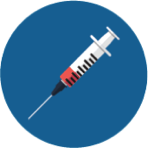
- Used needles, syringes, and other injection equipment may have someone else’s blood on them, and blood can carry HIV. . HIV can survive in a used syringe for up to 42 days, depending on temperature and other factors.
- You’re also at risk for getting hepatitis B and C, and other infections if you share needles, syringes, or other injection equipment (for example, cookers).
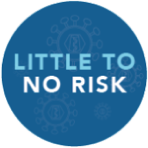
What are some rare ways that HIV could be transmitted?
There is little to no risk of getting HIV from the activities below. For transmission to occur, something very unusual would have to happen.
Massage
- Massage and rubbing bodies against each other presents no risk of passing on HIV.
Oral Sex
- Oral sex involves putting the mouth on the penis (fellatio), vagina (cunnilingus), or anus (rimming).
- Factors that may affect this risk include ejaculation in the mouth with oral ulcers, bleeding gums, or genital sores, and the presence of other sexually transmitted infection (STI).
- You can get other STIs from oral sex.
Workplace
- The most likely cause is being stuck with a contaminated needle or another sharp object.
- Careful practice of standard precautions protects patients and health care personnel from possible occupational HIV transmission.
Medical Care
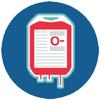
- The New Zealand blood supply and donated organs and tissues are thoroughly tested, so it is very unlikely that you would get HIV from blood transfusions, blood products, or organ and tissue transplants.
- You cannot get HIV from donating blood. Blood collection procedures are highly regulated and safe.
Food

- You can’t get HIV from consuming food handled or prepared by someone with HIV.
Biting / Spitting

- There is no risk of transmitting HIV through spitting, and the risk through biting is negligible. Post-exposure prophylaxis is not indicated after a bite in all but exceptional circumstances.
- HIV is not transmitted through saliva.
Kissing

- Saliva does not transmit HIV meaning kissing is completely safe.
Female-to-Female
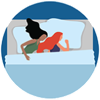
- Case reports of female-to-female transmission of HIV are rare.
- Vaginal fluids and menstrual blood may carry the virus and exposure to these fluids through mucous membranes (in the vagina or mouth) could potentially lead to HIV infection.
Tattoos and Body Piercings

- There are no documented cases in New Zealand of anyone getting HIV this way.
- However, it is possible to get HIV from tattooing or body piercing if the equipment used for these procedures has someone else’s blood in it or if the ink is shared. This is more likely to happen when the person doing the procedure is unlicensed because of the potential for unsanitary practices such as sharing needles or ink.
- If you get a tattoo or a body piercing, be sure that the person doing the procedure is properly licensed and that they use only new or sterilised needles, ink, and other supplies.
Watersports
- The terms ‘watersports’ and ‘piss-play’ refer to sexual acts involving urine. HIV is not present in urine so watersports carry no risk of HIV transmission.
Sex Toys
- HIV can be transmitted from person-to-person via sex toys such as dildos, vibrators and butt-plugs, if they are being shared.
- When PrEP or treatment as prevention are not being used, putting a condom on toys and changing the condom before using it on a different person will prevent HIV being passed on.
- Alternatively, you can wash sex toys thoroughly with soap and hot water after each person.
- Sex toys that are shared but not covered with a condom or cleaned between uses can also transmit other STIs.
Douching
- Douching is a way of cleaning your arse or vagina before being fucked and is done by inserting a tube or douching bulb into your arse and flushing it with water.
- Douching can increase the risk of HIV infection because it removes the mucous lining leaving you vulnerable if having sex without a condom, when PrEP or treatment as prevention are not being used.
- Also, using a douche with a nozzle can cause tiny cuts.
What body fluids transmit HIV?
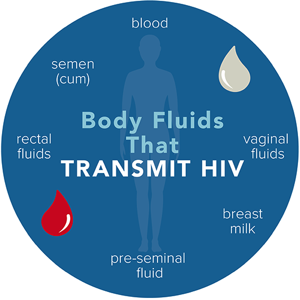
Only certain body fluids from a person who has HIV can transmit HIV. These fluids include:
- blood,
- semen (cum),
- pre-seminal fluid (pre-cum),
- rectal fluids,
- vaginal fluids, and
- breast milk.
How well does HIV survive outside the body?
HIV does not survive long outside the human body (such as on surfaces), and it cannot reproduce outside a human host. It is not transmitted
- By mosquitoes, ticks, or other insects.
- Through saliva, tears, or sweat.
- By hugging, shaking hands, sharing toilets, sharing dishes, or closed-mouth or “social” kissing with someone who has HIV.
- Through other sexual activities that don’t involve the exchange of body fluids (for example, touching).
- Through the air.
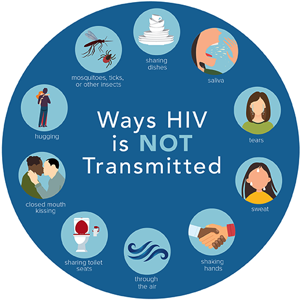
What can increase the risk of getting or transmitting HIV?
Viral Load
The higher someone’s viral load, the more likely that person is to transmit HIV.
- Viral load is the amount of HIV in the blood of someone who has HIV.
- Viral load is highest during the initial acute phase of HIV which may be before someone has been tested and aware of their status or started HIV treatment.
- Taking HIV medicine can make the viral load very low—so low that a test can’t detect it (called an undetectable viral load).
- People with HIV who keep an undetectable viral load (or stay virally suppressed) can live long, healthy lives. Having an undetectable viral load also helps prevent transmitting the virus to others through sex or sharing needles, syringes, or other injection equipment, and from mother to child during pregnancy, birth, and breastfeeding.
Other Sexually Transmitted Diseases

If you have another sexually transmitted disease (STD), you may be more likely to get or transmit HIV.
- Getting tested and treated for STDs can lower your chances of getting or transmitting HIV and other STDs.
- If you have HIV and get and keep an undetectable viral load, getting an STD does not appear to increase the risk of transmitting HIV. But STDs can cause other problems.
- Using condoms can reduce your chances of getting or transmitting STDs that can be transmitted through genital fluids, such as gonorrhoea, chlamydia, and HIV.
- Condoms are less effective at preventing STDs that can be transmitted through sores or cuts on the skin, like human papillomavirus, genital herpes, and syphilis.
Alcohol and Drug Use
When you’re drunk or high, you’re more likely to engage in risky sexual behaviours like having sex without protection (such as condoms or medicine to prevent or treat HIV).
Counselling, medicines, and other methods are available to help you stop or cut down on drinking or using drugs. Talk with a counsellor, doctor, or other health care provider about options that might be right for you.
- Being drunk or high affects your ability to make safe choices.
- Drinking alcohol, particularly binge drinking, and using “club drugs” can alter your judgment, lower your inhibitions, and impair your decisions about sex or drug use.
- You may be more likely to have unplanned sex, have a harder time using a condom the right way every time you have sex, have more sexual partners, or use other drugs.
Counselling, medicines, and other methods are available to help you stop or cut down on drinking or using drugs. Talk with a counsellor, doctor, or other health care provider about options that might be right for you.
HIV and Substance Use
Substance use disorders, which are problematic patterns of using alcohol or another substance, such as crack cocaine, methamphetamine (“meth”), amyl nitrite (“poppers”), prescription opioids, and heroin, are closely associated with HIV and other sexually transmitted diseases.
Injection drug use (IDU) can be a direct route of HIV transmission if people share needles, syringes, or other injection materials that are contaminated with HIV. However, drinking alcohol and ingesting, smoking, or inhaling drugs are also associated with increased risk for HIV. These substances alter judgment, which can lead to risky sexual behaviours (e.g., having sex without a condom, having multiple partners) that can make people more likely to get and transmit HIV.
In people living with HIV, substance use can hasten disease progression, affect adherence to antiretroviral therapy (HIV medicine), and worsen the overall consequences of HIV.
For more information on HIV and Alcohol and Drugs
Injection drug use (IDU) can be a direct route of HIV transmission if people share needles, syringes, or other injection materials that are contaminated with HIV. However, drinking alcohol and ingesting, smoking, or inhaling drugs are also associated with increased risk for HIV. These substances alter judgment, which can lead to risky sexual behaviours (e.g., having sex without a condom, having multiple partners) that can make people more likely to get and transmit HIV.
In people living with HIV, substance use can hasten disease progression, affect adherence to antiretroviral therapy (HIV medicine), and worsen the overall consequences of HIV.
For more information on HIV and Alcohol and Drugs
Information contained in this section is a reproduction for New Zealand of content published on the CDC (Centers for Disease Control and Prevention) Website
Join Body Positive
By becoming a member you will be able to access all the services we offer, as well as support and updates to help you live better.
Newsletter
Want to be keep up with whats happening at Body Positive?
Subscribe to our newsletter below by submitting your e-mail address.
Subscribe to our newsletter below by submitting your e-mail address.


